The seven volcanic islands in the north-east of Sicily have been on the UNESCO World Heritage List since December 2000.
The archipelago offers wonders in the form of time travel, adventurous routes, wild beaches, and more alive legends than ever.
Here are 7 suggestions, one for each isle, for venturing to the Aeolian islands like a local.

Aeolian islands like a local
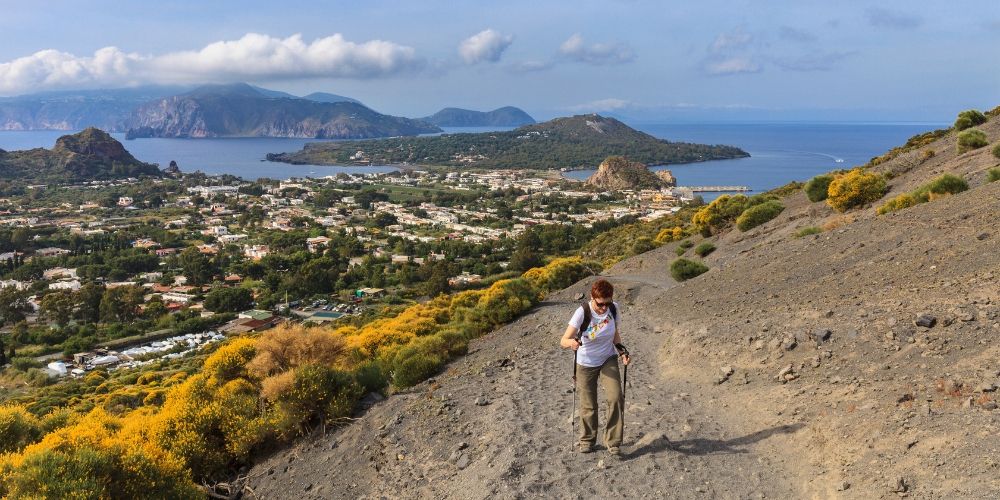
The Aeolian Islands represent a captivating and enigmatic destination where the interplay between archaic and contemporary elements is complex and entangled.
Despite any form of flattening and standardization, Lipari, Vulcano, Salina, Stromboli, Filicudi, Alicudi, and Panarea maintain distinct and venerable cultures and traditions that do not necessarily align with those of nearby territories.
Beaches of pebbles and black sand, spectacular volcanic eruptions, fishing villages, and irresistible marine views are all part of the package.
But there's much more, starting with the history that permeates old mule tracks, archaeological sites, and museums.
Those who take the time to talk to the locals can make exciting discoveries and enter a magical dimension populated by fantastic creatures and stories perceived as real.
Those looking for nature will encounter landscapes ranging from rugged and harsh to gentle and comforting.
Excited for your next Italian trip to Isole Eolie? Find out how to reach.
Many travellers decide to explore them all at once during a thrilling sailing holiday.
Here are a few tips for visiting the Aeolian Islands like a local.
Book unforgettable experience in Sicily7. What to do in the Aeolian islands like a local. Exploring Lipari
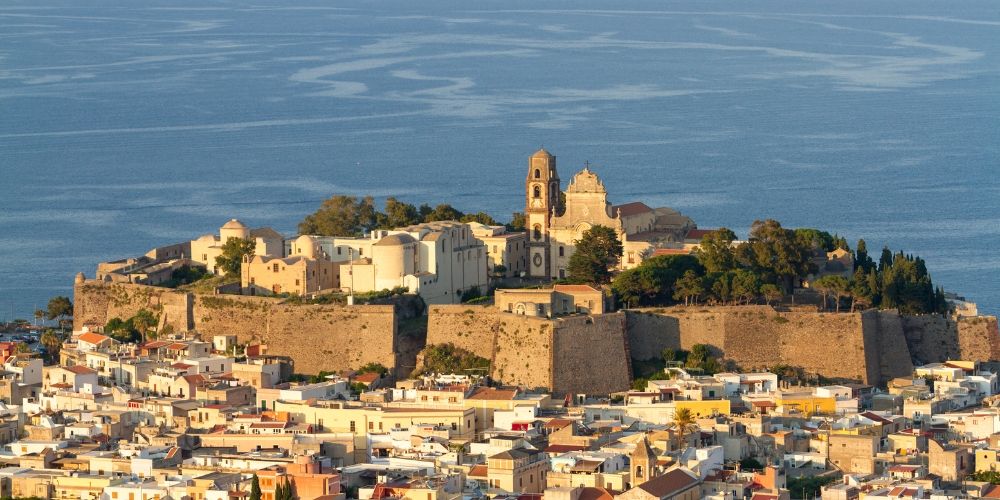
From the summit of a lofty volcanic rock, an imposing sixteenth-century fortress extends a cordial welcome to travellers preparing to disembark at Lipari.
Contemplate its breathtaking beauty from the Quattrocchi belvedere and the Geophysical Observatory, two privileged vantage points that any local will advise you to visit.
Having beheld the archipelago's largest island from on high, with the sea stacks and the looming presence of Vulcano in the background, it is time to plunge into the fray.
Beaches and bays act as the chief magnet, drawing tourists and adventurers to Lipari, a succession of enchanting vistas that seem crafted with artificial intelligence.
Among those that most enchant visitors, the pristine expanse of Acquacalda stands out. Here, the pumice stone bestows upon the landscape an almost lunar aspect. From the sea, the view of this stretch of coastline, with the towering white dune above, is simply staggering.
Amid a trek towards Valle Muria, a beach with black and red sand betraying its volcanic origin, a stroll through the Acropolis, and a visit to the Aeolian Archaeological Museum, find time to gratify the palate, too.
For a sweet respite, indulge in cannoli, granita, sesame cookies, Aeolian 'gigi', and nacatole. Also, try some Sicilian cuisine classics like stuffed eggplants, pane cunzato and Lipari-style salad.
Get your tickets for Regional Aeolian Archeological Museum6. In Salina, like in a movie
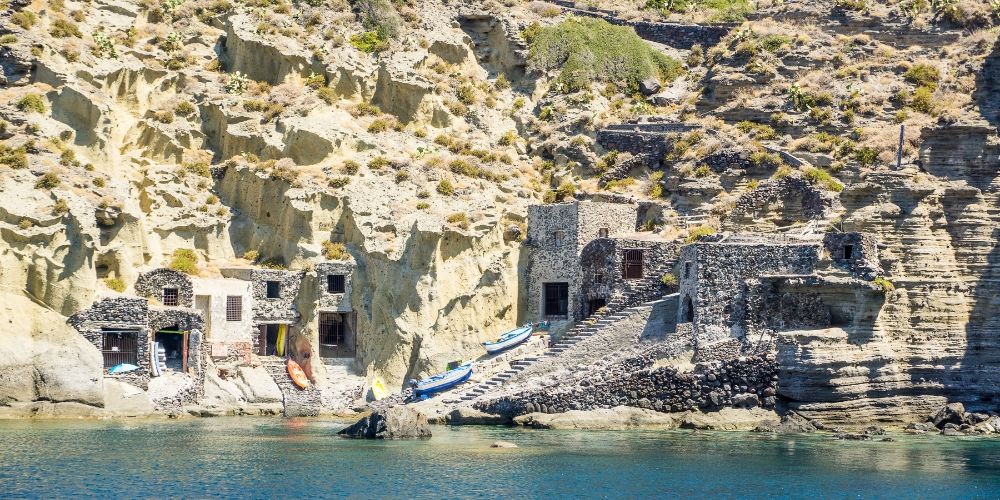
When 'Il Postino: The Postman' was released in 1994, it moved Italy and the world. The last movie starring Neapolitan iconic actor Massimo Troisi and directed by English filmmaker Michael Radford collected four nominations at the 1996 Oscars, clinching one for its soundtrack.
Besides romantic Procida, verdant and untamed Salina was the other location that brought to life the fishing island where the events set.
The scenes where Mario, the protagonist, traverses the coastal landscape on his bicycle were filmed in Pollara, a small hamlet nestled around the remnants of an ancient volcanic crater in the northwestern part of the island.
Today, the beach where Troisi and Philippe Noiret shared their most intense cinematic moments has considerably diminished. However, it is still crowded with tourists eager to behold a place etched into the collective imagination thanks to an unforgettable film.
The site is not only one of the archipelago's most evocative spots but also a prized destination for diving enthusiasts.
Continuing towards the edge of the hamlet, you'll find a typical Aeolian dwelling overlooking the bay which was used as the rustic and secluded setting for Pablo Neruda's residence.
5. Meeting Godzilla
Vulcano: black sand beaches, natural thermal baths, the picturesque village of Gelso with its abandoned lighthouse, the Levante harbour, the trails through the great crater of La Fossa. It's such a magic place to stay!
What if we told you that your journey might even lead you to cross paths with legendary creatures like Godzilla and King Kong?
To the northeast of the Vulcanello peninsula lies a site known as Valle dei Mostri (Valley of the Monsters), a sandy area where boulders of lava stone emerge, shaped by the forces of time and weather erosion into creatures with a frighteningly 'monstrous' animal-like appearance.
Dinosaurs, bears, eagles, and lions seem to stand guard, ready to launch an attack against visitors.
At sunset, when the last rays of the sun illuminate the massive dark rocks, the spectacle is even more striking. Children will particularly appreciate the experience.
4. Having the best time in Panarea
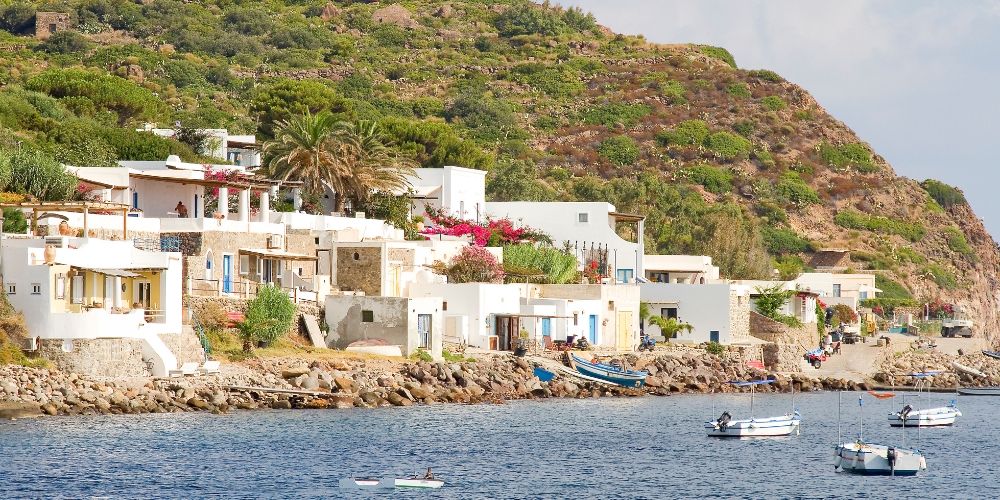
It is so small that you can explore it in half a day. It is so ancient and brimming with natural attractions that it takes much more time to appreciate fully.
Boutiques, luxurious hotels, and glamorous hangouts—hallmarks of a classic high—society vacation—are certainly not lacking in Panarea, which, above all, boasts an undeniable rustic and wild charm.
Of course, its seascape is a marvel, with paradisiac coves and inlets of pebbles and stones. The seabed is incredibly fascinating if you're up for some diving. Also, you should try a boat excursion among the five uninhabited islets that dot the route to Stromboli.
It's best to wear comfortable shoes because walking will take a lot.
For instance, you can get to the prehistoric village of Punta Milazzese, a testament to the ancient history of the Aeolian islands. To explore the subject further, visit the Panarea branch of the Aeolian Archaeological Museum.
In general, Panarea boasts a series of well-marked itineraries, often relatively easy to traverse. Through these paths, you can circumnavigate the entire perimeter of the island. Choose one that leads you to Punta del Corvo to conquer the highest point.
Book excursion in Sicily3. Docking in a Guinness-record port
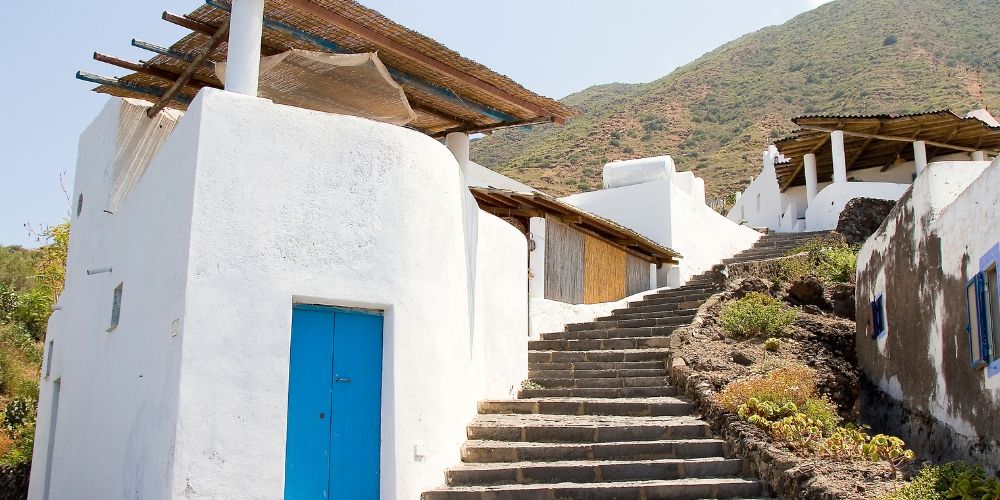
Ginostra is a tiny settlement installed among volcanic rocks on the southwest slope of Stromboli.
Accessible only by sea and connected to the village just a bit higher up by mule tracks still traversed by donkeys, it consists of a handful of dwellings and a harbour famous for being the smallest in the world.
'Il Pertuso', as locals call it, has only recently been equipped with a pier for the docking of larger ships, ensuring a safe evacuation in case of natural disasters. However, the aspect of the old port has remained practically unchanged, as has that of this coastal hamlet suspended in time.
Needless to say, you won't see cars among its narrow streets overlooking the sea.
Several agencies in Stromboli organize daily excursions to Ginostra, both group tours around the island and personalized trips. Particularly appealing are the evening expeditions, including sunset aperitif on board and dinner at a restaurant in Ginostra.
2. In a hidden spot in Filicudi

Just a short stroll from the port of Filicudi takes you to a place that offers a glimpse into the history of Aeolian craftsmanship.
This location is situated at the foot of Capo Graziano, a significant archaeological site encompassing a Bronze Age village.
Known as 'le Macine', the area sits on a cliff facing an underwater archaeological zone. Here lies a bunch of ancient millstones made of lava rock dating from the 19th to the early 20th century and used in the processing of wheat and olives. Some still feature the names of the artisans who crafted them.
These tools, once sold and transported by ship to other destinations, are a symbol of Filicudi and were encountered almost everywhere on the island.
The path, except for the last downhill stretch, is easily traversable.
1. Taking a walk on Alicudi's wild side
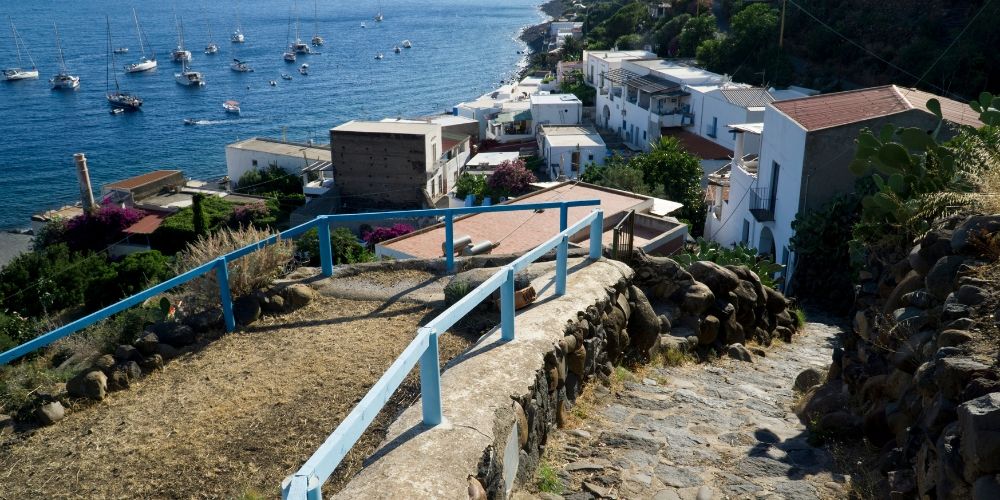
Alicudi is the wildest island in the Aeolian archipelago. There are more wild goats than humans (600 against 100 inhabitants), a significant part remains uninhabited, restaurants and bars can be counted on one hand, and there are no cars around.
It's a unique place, silently immersed in Mediterranean nature, that appears to form a world apart, a kind where ghost stories are still being told and seem perfectly believable in such a peculiar and complex cultural mosaic.
Electricity is a recent addition, and street lighting is completely absent. Given the atmosphere, it's not so difficult to believe in unsettling presences, flying women, and witches' Sabbaths, especially on certain dark nights.
The church of San Bartolo stands 300 meters above the sea in the eponymous district of which it is the sole 'inhabitant'.
Classic Aeolian architecture, featuring houses in soft colours, terraces with masonry seats, and columns, spreads over a rugged yet lush landscape. In Contrada Tonna, visitors may encounter some emblematic examples of the local construction style.
The paths connecting districts, houses clinging to the slopes, and cultivated lands are all on the eastern side.
In addition to the road along the coast, there is a continuous succession of climbs and wide steps made of lava stone up to Filo dell'Arpa, the island's highest point.
The few shops and grocery stores are concentrated in the port area, where several signs advertise boat tours and rental services to reach otherwise inaccessible beaches.
Book experience in nature in SicilyAbout the author
Written on 23/05/2024


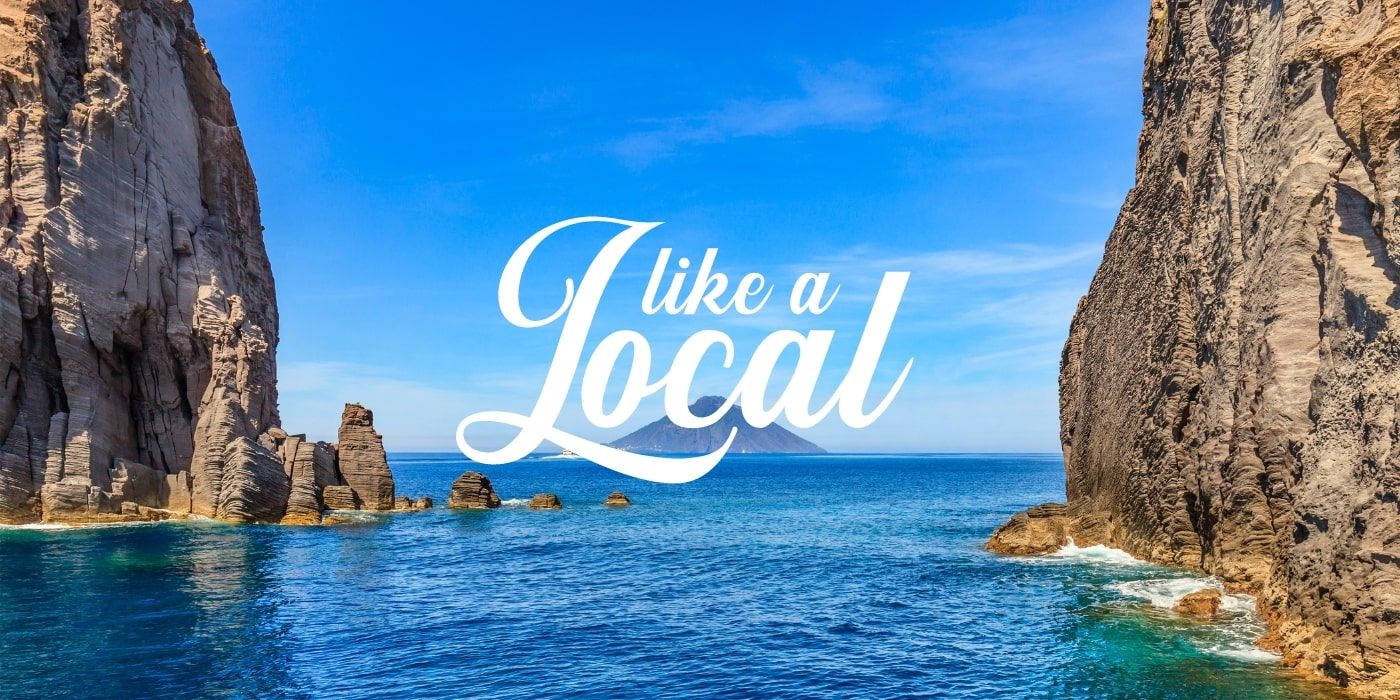
Lorena Calise
Uncover the Aeolian islands like a local on our 7-stop trip. Through history, sea and nature.